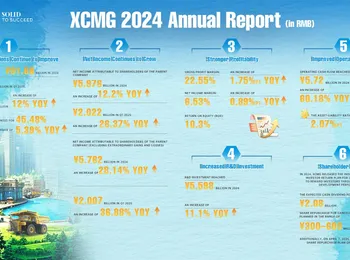The Solarbank 3 Pro is the most powerful solution from Anker Solix to date. It is almost oversized for a simple balcony solar power station and impressed us in our test with its extreme performance (sometimes beyond the balcony power station) as well as its simple and reliable function. It offers some new and interesting features such as AC charging in combination with dynamic electricity tariffs and the new AI optimization, which was not yet available with the Solarbank 2 Pro . If you are looking for a powerful balcony power plant system that can be expanded later (or immediately) into a mini PV system with up to eight panels and 1,200 W feed-in power, the Anker Solix Solarbank 3 Pro is the right choice. For those who need up to four panels and do not use a dynamic electricity tariff (and do not want to use one in the future), the inexpensive predecessor will still be perfectly adequate in 2025. The recommended retail price for the Anker Solix Solarbank 3 E2700 Pro is 1,499 euros (1726 USD). This is significantly more than at the launch of the Solarbank 2 Pro, but also includes more power. Two years ago anker Solix launched a storage system for balcony power plants for the first time with the first generation of the solar bank.
The Anker Solix Solarbank 2 series, which consists of various models, was followed a few weeks ago the launch of the Anker Solix Solarbank 3 E2700 Pro. The third generation is once again clearly positioned above the Solix Solarbank 2 Pro, which was in our test last year last year. Our Anker Solix Solarbank 3 Pro test reveals what the new generation has to offer in terms of innovations and how well it has performed in practice in recent weeks. Before we get to the actual test report, let's first compare the specifications of the Solarbank 3 Pro with its predecessor Solarbank 2 Pro . This provides an initial overview of the improvements and new features. With the Solarbank 3 Pro, Anker Solix has once again sharpened things up considerably. As with the Solarbank 2 Pro four MPPTs are also installed here, but these can now each accept up to 900 W (a total of 3,600 W, i.e. 50 percent more) with at least one additional battery installed (without a total of 1,800 W). This means that two large solar panels can be connected to an MPPT via a Y-cable, which increases the maximum possible number to eight. The integrated storage system has also been improved. Instead of the previous 1.6 kWh, the third generation now offers almost 2.7 kWh (2,688 Wh to be precise) of battery capacity. The new BP2700 additional battery with 2,688 Wh is also available to match. It is compatible with the old BP1600. Thanks to the integrated heating function, the system can withstand temperatures down to -20°C, which of course requires energy. What is also the same: the feed into the domestic grid is consumption-contro lle d via smart meters (from Anker or Shelly 3EM / Pro 3EM / available at amazon.com ) . However, up to 1,200 W feed-in power can be set in the app (only after approval, then no longer operable as a balcony power plant). Another new feature is the option of AC charging, which is interesting in combination with a dynamic electricity tariff. There is also another emergency socket from which up to 1,200 W can be drawn directly - in the event of a power cut, for example. Despite the larger battery capacity and more power, the Solix Solarbank 3 Pro is only a good 2 cm taller (460 × 254 × 279 mm). The size (460 x 233 x 217.5 mm) of the new BP2700 additional battery with 2,688 Wh is even completely identical to the dimensions of the old BP1600 with 1,600 Wh, which can still be combined. This means that the battery capacity can be combined as required. At almost 30 kg, the weight of the third generation has once again increased significantly. Apart from that, installation is once again as simple as ever. The Solarbank 3 Pro is simply plugged onto the additional batteries (if available) to create a more or less tall tower. The necessary material is included in the scope of delivery. The existing or supplied solar panels (up to four) are connected directly or via Y-cable (up to eight) to the four MPPT connections of the system. In addition, the 5 m long power cable must be connected to a socket in the household to be supplied. The Anker Solarbank 3 Pro is ready, at least in the simplest installation mode. If you want to benefit as much as possible from the solar energy you generate yourself, you should buy at least a few Anker Solix Smart Plugs and connect them to the largest consumers in the household. Even better is the installation of the Anker Solix Smart Meter or a compatible model from Shelly (3EM and Pro 3EM, available at amazon.com ) in the household junction box, although this requires an electrician. A fully consumption-contro lle d feed-in is then possible, but of course also incurs additional costs.
Once the Anker Solix Solarbank 3 Pro is fully charged, the data from Anker Solix can be integrated into smart home platforms such as HomeAssistant and the like without any tinkering in order to realize even more possibilities for intelligent energy use. Another small point of criticism: The test device sometimes emitted a low buzzing noise, but this is not a problem, at least when used outdoors. Finally, a few words about the efficiency of the Anker Solix Solarbank 3 Pro. During a continuous discharge process with 400 W, we were able to draw 2,127 Wh from the storage system until the battery reached the set limit of 10 percent (alternatively 5 percent). This results in an efficiency of around 88 percent, which is a solid value. However, this may differ with variable discharge. During the AC charging process with up to 1,200 W, a total of 2,651 Wh flowed into battery when discharged to 10 percent. This means that around 10 percent was lost during the conversion. This should be taken into account when using variable electricity tariffs, as only around 80 percent of the energy supplied can be withdrawn again (at the power levels used). Whether the purchase of the Solix Solarbank 3 Pro is financially viable cannot be assessed in general terms, as this depends on various factors such as electricity consumption, electricity costs, location and the number of modules. A solar calculator can help with the assessment. However, as Anker promises a 10-year guarantee and a service life of 15 years or 6,000 charging cycles up to 70 percent, a system should usually pay for itself in a few years. Apart from the fact that the feeling of producing your own electricity is priceless...
Strong, stronger, Solix Solarbank 3 Pro. With the third generation, Anker offers a particularly powerful system that partly exceeds the (German) limits of the balcony solar power station. If you want a lot, you get a lot. If you simply want to operate a small balcony power station, the second generation is still sufficient.
























